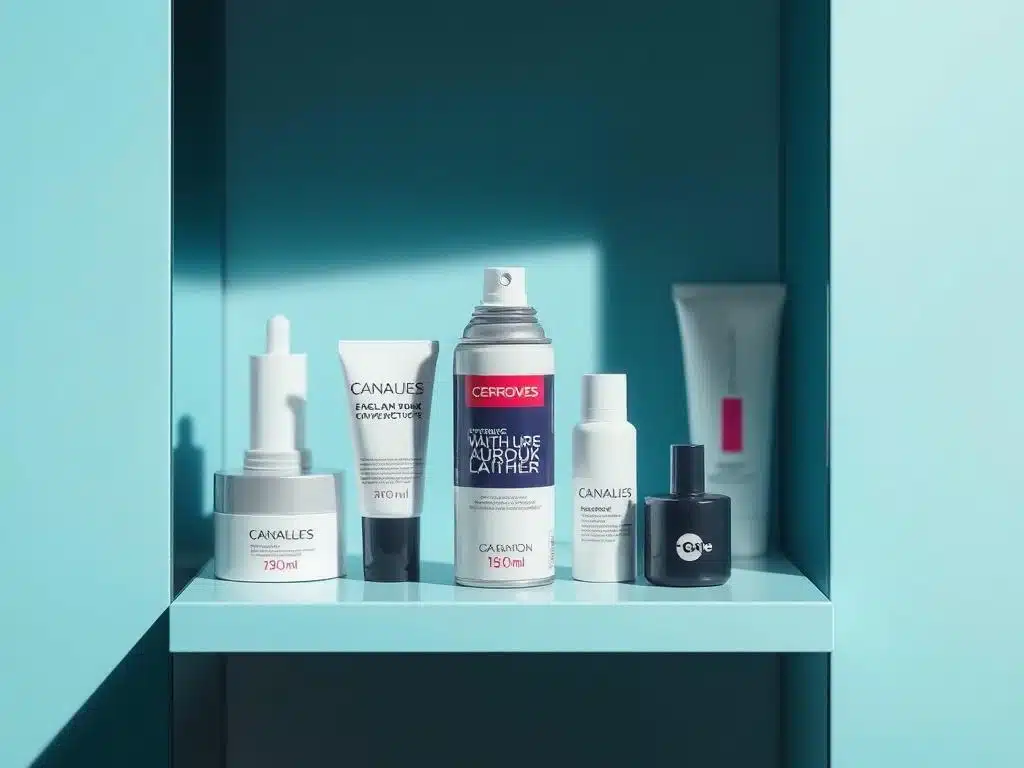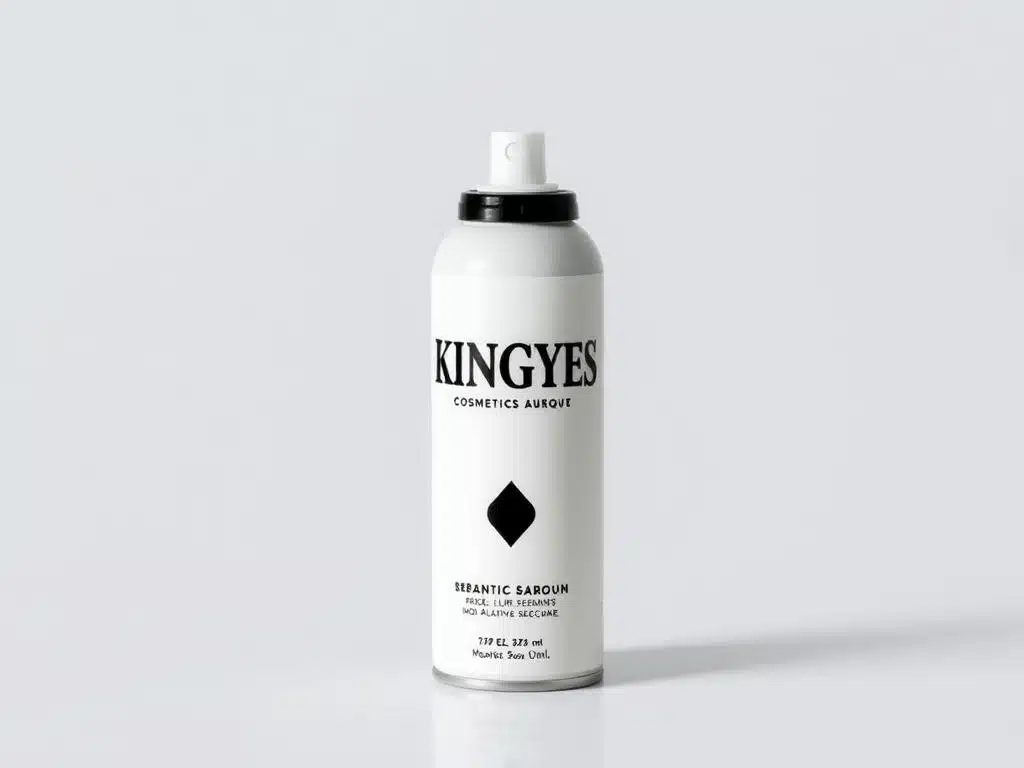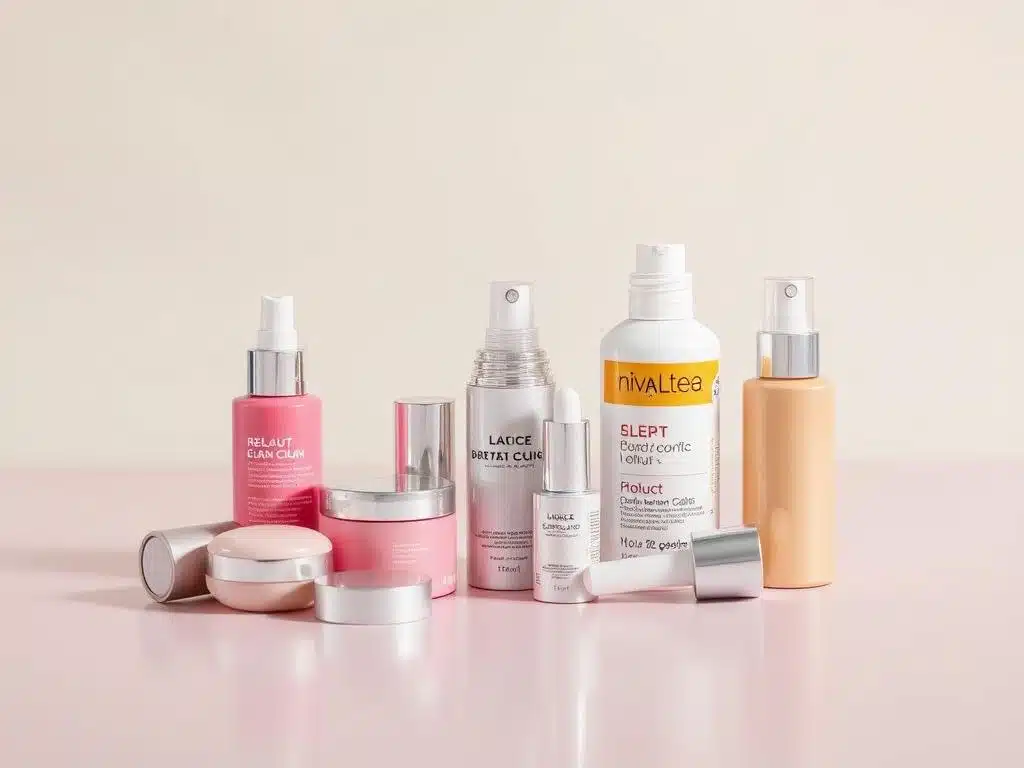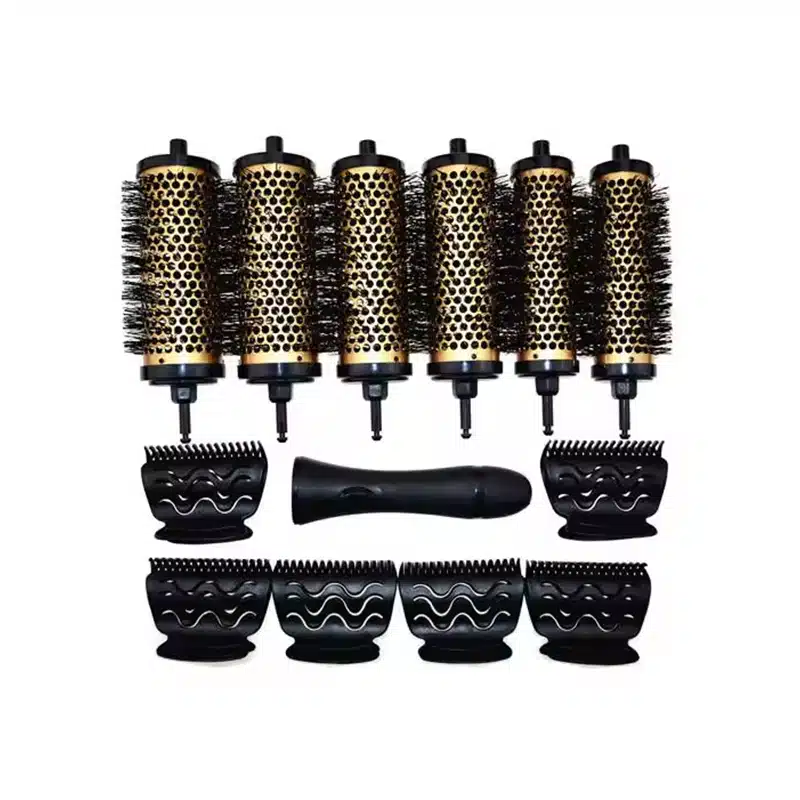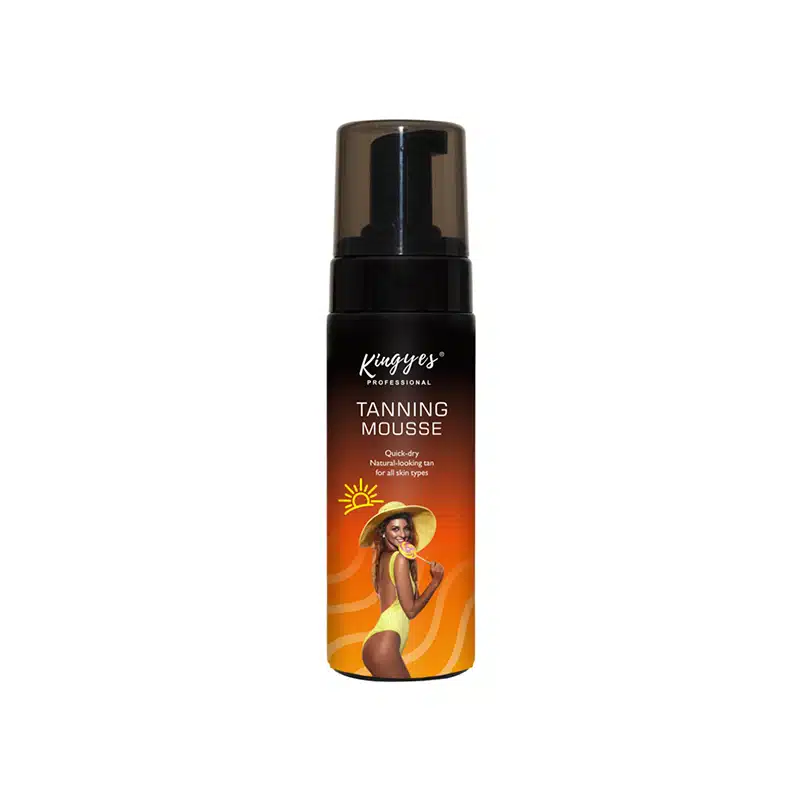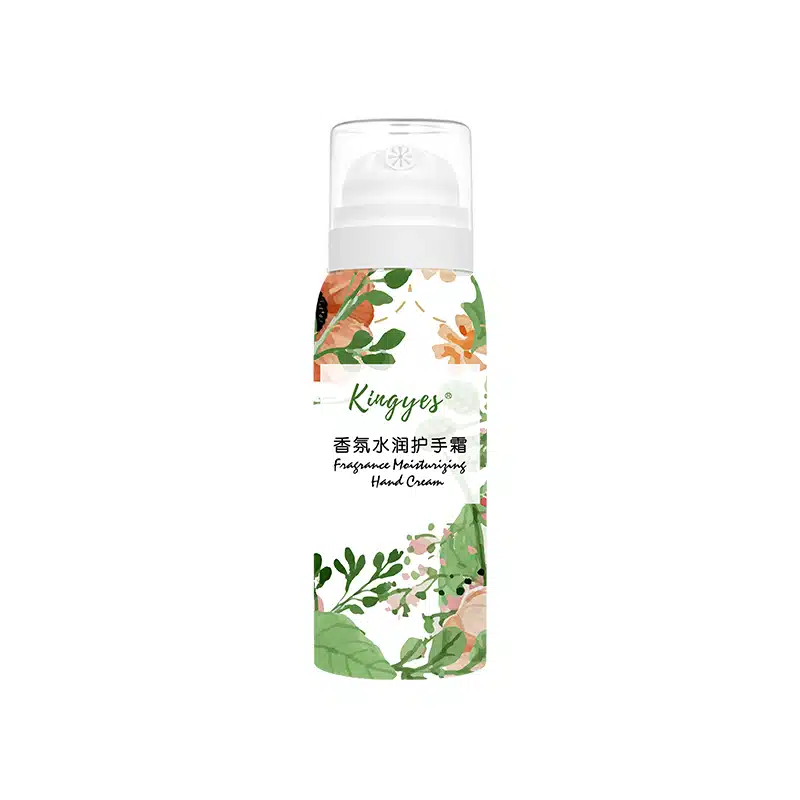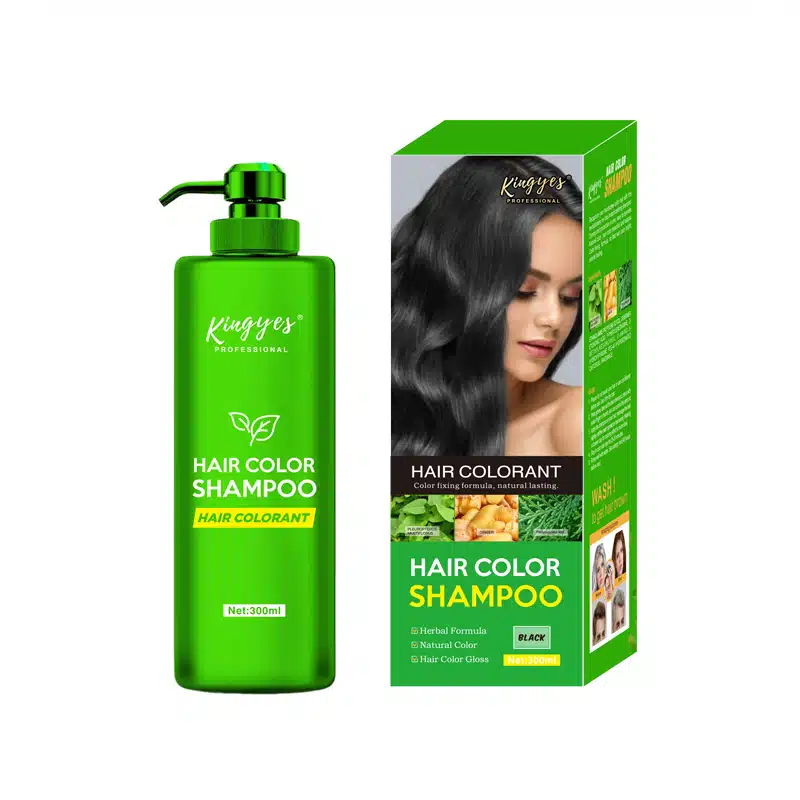
What Is An Aerosol In Cosmetics?
Obsah
The Science of Sprays: What Exactly is an Aerosol in Cosmetics?
Ever wondered how your lak na vlasy transforms from a liquid into a fine hmla? Or how your spray-on opaľovací krém applies so evenly? The answer lies in the fascinating world of aerosols. In the realm of kozmetika a personal care, aerosols are a common and convenient way to dispense a variety of products, from starostlivosť o vlasy na deodorants. But what exactly is an aerosól, and how does it work in your favorite kozmetika products? This article demystifies aerosól technology, explaining how these pressurized systems function, the ingredients involved, and their applications in the beauty industry. We’ll also touch upon the different types of aerosols and address some common questions and environmental concerns associated with their use.
Defining Aerosols: More Than Just a Spray
The term “aerosól” often conjures images of sprej cans and hmla, but the scientific definition is broader. An aerosól is a suspension system of solid or kvapalina particles in a gas. In the context of kozmetika, an aerosól refers to a product dispensed from a pressurized container using a propellant. The propellant is a gas that is either compressed or liquefied and is responsible for forcing the product out of the container when the valve is opened. Aerosól technology is used to deliver a variety of kozmetika products in a controlled and convenient manner.
Aerosól products are ubiquitous in the beauty industry. You can find everything from hairsprays and dry shampoos na deodorants and antiperspirants, to foundations and setting spreje packaged as aerosols. The appeal of aerosols lies in their ability to deliver a fine, even sprej, which is often ideal for kozmetika applications. It is important to note that an aerosól is not just the sprej itself, but the entire system, including the product, the propellant, and the container. Aerosol containers are designed to maintain the pressure needed to dispense the product correctly.
The Mechanics of an Aerosol: How Does it Work?
. aerosól system is a marvel of engineering. It relies on the principle of pressure to dispense a product in a controlled manner. Here’s a simplified breakdown of how it works:
Pressurization: Stránka aerosól container, also known as a can, is filled with a mixture of the product and a propellant. The propellant is a gas that is either compressed alebo liquefied under pressure. Aerosol cans are specifically designed to hold the product and maintain pressure.
Valve Activation: When you press down on the valve actuator (the button or nozzle), the valve opens, creating a pathway for the product to escape. The aerosol valve is crucial to the function of the aerosól.
Product Dispensing: The pressure inside the container is higher than the atmospheric pressure outside. This pressure difference forces the product and some of the propellant up a dip tube and out through the valve. Aerosol spray cans are designed to dispense the product evenly.
Atomization: As the mixture of product and propellant exits the valve,. propellant rapidly expands and vaporizes. This sudden expansion breaks the product into tiny droplets, creating a jemná hmla alebo sprej.
Typ sprej produced – whether a fine hmla, a pena, or a stream – depends on the product’s formulation, typ propellant used, and the design of the valve a nozzle. The mechanics of an aerosól are important to understand because they affect how the product is dispensed and applied.
Key Components of a Cosmetic Aerosol
A kozmetika aerosól typically consists of the following key components:
The Product: This is the active kozmetika ingredient or formulation that you want to apply, such as lak na vlasy, dezodorant, opaľovací krém, alebo nastavovacie spreje. The formulation can be a solution, emulsion, suspension, or gél. It is important to note that the product’s consistency will affect how it is dispensed.
The Propellant: Stránka propellant provides the force needed to expel the product from the container. Historically, chlorofluorocarbons (CFCs) were used as propellants, but due to their impact on the ozónová vrstva, they have been largely replaced by hydrocarbons (like propán, butána izobután) and compressed gases (like nitrogen or carbon dioxide). CFCs are no longer used in cosmetic aerosols. Products use rôzne typy propellant.
The Container: Aerosol containers are typically made of metal (aluminum or tin-plated steel) and are designed to withstand the internal pressure. They are often lined with a protective coating to prevent corrosion and any reaction between the product and the container. Some aerosols used glass containers, but this is much less common due to safety concerns. Aerosol containers are designed to be durable and safe.
The Valve: Stránka valve is a critical component that controls the flow of the product. It consists of several parts, including the actuator (the button you press), the stem, the gasket, and the spring. The design of the valve influences the sprej pattern and the amount of product dispensed. There are different types of valves used in aerosols, including continuous spray valves a metered dose valves.
The Dip Tube: This is a plastic tube that extends from the valve to the bottom of the container. It allows the product to be drawn up from the bottom of the can, even when the can is held at an angle. This ensures that the product can be fully dispensed.
Understanding these components helps to appreciate the complexity of an aerosól system and how each part plays a role in delivering the product effectively.
Types of Aerosols in the Cosmetic Industry
There are primarily two types of aerosól systems used in the kozmetika industry:
Liquefied Gas Systems: These systems use a liquefied gas as the propellant. The propellant is dissolved in the product or forms a separate layer above the product. When the valve is opened, the propellant vaporizes, creating pressure that forces the product out. Common liquefied gas propellants include hydrocarbons ako propán, butána izobután. These are the most common type of aerosól system used in kozmetika.
Compressed Gas Systems: These systems use a compressed gas, such as nitrogen, carbon dioxide, or nitrous oxide, as the propellant. The compressed gas occupies the headspace above the product in the container. When the valve is opened, the gas expands, pushing the product out. Compressed gas systems typically deliver a coarser sprej than liquefied gas systems and are often used for products like foams a gels.
The choice between a liquefied gas system and a compressed gas system depends on the desired sprej pattern, the product’s formulation, and compatibility with the propellant. Liquefied gas systems are generally preferred for products that require a jemná hmla, zatiaľ čo compressed gas systems are suitable for products that need to be dispensed as a pena or a thicker stream. Some products also use a combination of two methods.
Common Cosmetic Products that Use Aerosol Technology
Aerosól technology is widely used in the kozmetika a personal care industry to deliver a variety of products. Here are some common examples:
- Hair Sprays: Hairsprays are perhaps the most iconic example of aerosól kozmetika products. They use aerosols to create a jemná hmla that provides hold and control for various účesy. Aerosol hair products are very popular and widely used.
- Deodorants and Antiperspirants: Mnohé deodorants and antiperspirants are packaged as aerosols, allowing for easy and even application to the underarms.
- Dry Shampoo: Suché šampón, used to refresh vlasy between washes, often comes in an aerosól sprej forma. Aerosols are used to apply the product evenly to the roots.
- Sunscreen: Sprej na opaľovacie krémy have become increasingly popular due to their convenience and ease of application, especially for hard-to-reach areas. They use aerosols to create a fine, even sprej that covers the skin.
- Nastavovacie spreje: Makeup nastavovacie spreje often use aerosól technology to create a fine hmla that helps to set makeup and prolong its wear. They are often used to provide a fine and even layer of product.
- Body Sprays: Vôňa body spreje are frequently packaged as aerosols. This allows for a wider dispersion of the vôňa.
- Shaving Foams: Shaving foam is often dispensed from aerosol cans, creating a rich lather that helps to soften the vlasy and lubricate the skin for shaving. Shaving foam is a classic example of a pena product.
- Self-Tanners: Sprej na self-tanners allow for a more even application and can help to avoid streaks.
- Mousse: Hair mousse is often dispensed as a pena, allowing for even distribution through the vlasy to add volume and texture.
- Thermal Spring Water: Many brands offer thermal waters in aerosól form, which can be sprayed on the face for hydration and soothing benefits.
This is not an exhaustive list, but it demonstrates the wide range of kozmetika products that utilize aerosól technology. Aerosol products are ubiquitous in the beauty industry. Products dispensed as aerosols are popular because of their convenience and effectiveness.
The Benefits of Using Aerosols in Cosmetics
Aerosols offer several advantages in kozmetika applications:
- Fine and Even Application: Aerosols can deliver a very jemná hmla, which allows for a more even application of the product compared to other dispensing methods. This is particularly important for products like lak na vlasy, opaľovací kréma nastavovacie spreje. The fine spray ensures that the product is distributed evenly.
- Controlled Dosage: Aerosól valves can be designed to dispense a specific amount of product with each spray, providing better control over dosage. Metered dose valves are a good example of this.
- Convenience and Ease of Use: Aerosól spreje are generally quick and easy to use, making them convenient for everyday use. They often require less effort than other methods of application.
- Hygienic: Aerosól containers are sealed, which helps to protect the product from contamination and oxidation. This can extend the shelf life of the product and maintain its effectiveness. This also means the product is used without you having to touch it with your hands.
- Reach and Coverage: Aerosól spreje can easily reach areas that might be difficult to access with other methods, such as the back or the scalp. This makes them ideal for products like opaľovací krém a lak na vlasy.
- Specific Applications: Aerosols are well-suited for specific applications, such as creating foams (like shaving foam or mousse) or delivering a fine hmla (like nastavovacie spreje alebo thermal waters).
These benefits have contributed to the widespread use of aerosols in the kozmetika industry. The ability to deliver a product in spray form has revolutionized many aspects of personal care. However, it’s important to consider these benefits alongside the potential environmental and health impacts, which we’ll discuss later.
Environmental and Health Considerations of Aerosols
Zatiaľ čo aerosols offer many advantages, they have also been the subject of environmental and health concerns:
- Ozone Depletion: In the past, aerosols commonly used chlorofluorocarbons (CFCs) as propellants. CFCs were found to be a major contributor to the depletion of the ozónová vrstva, which protects the Earth from harmful UV radiation. As a result, the use of CFCs in aerosols has been phased out globally under the Montreal Protocol. However, older aerosól products may still contain CFCs. Depleting the ozone layer is a serious environmental concern.
- Air Pollution: Stránka hydrocarbon propellants that replaced CFCs, ako napr. bután, propána izobután, are volatile organic compounds (VOCs). VOCs can contribute to the formation of ground-level ozone, a major component of smog, which has negative impacts on air quality and human health. Regulations in many countries limit the amount of VOCs that can be used in aerosól products.
- Inhalation Risks: Inhaling the contents of aerosól spreje, including the propellants and the product itself, can pose health risks. While occasional exposure is unlikely to cause harm for most people, prolonged or excessive inhalácia can irritate the lungs and may lead to respiratory problems. Certain propellants, if inhaled in large quantities, can also have a narcotic effect. It’s important to use aerosols in well-ventilated areas. Individuals with asthma or other respiratory conditions may be more sensitive to the effects of aerosól inhalácia.
- Flammability: Mnohé aerosól propellants, najmä hydrocarbons, are flammable. Aerosol cans should be kept away from heat sources and open flames, and they should never be punctured or incinerated, even when empty.
- Waste Disposal: Aerosol cans can be challenging to recycle because they are made of metal and may contain residual propellant and product. However, many recycling programs now accept empty aerosol cans. It’s important to check with your local recycling guidelines to ensure proper disposal. Aerosol cans are often considered recyclable.
These environmental and health considerations have led to ongoing efforts to develop more sustainable aerosól technologies and to improve the safety of aerosól products. It’s important to be aware of these issues and use aerosols responsibly.
Innovations in Aerosol Technology: Towards Sustainability
Stránka aerosól industry is continuously evolving, with a growing focus on developing more sustainable and environmentally friendly technologies. Some key innovations include:
- Alternative Propellants: Research is ongoing to identify and develop alternative propellants that have a lower environmental impact than traditional hydrocarbons. This includes the use of compressed gases like nitrogen and carbon dioxide, as well as the development of new, more sustainable liquefied gas propellants.
- Water-Based Formulations: There is a growing trend towards water-based aerosól formulations, which can reduce the need for volatile solvents a propellants. Tieto stránky formulations often use compressed air or nitrogen as the propellant.
- Bag-on-Valve Technology: This is a newer aerosól technology that separates the product from the propellant using a bag inside the can. This allows for the use of compressed air or nitrogen as the propellant and can also improve product purity and shelf life. It also allows the product to be sprayed at any angle.
- Improved Valve Designs: Innovations in valve design are leading to more efficient dispensing, better control over the sprej pattern, and reduced product waste. Metered-dose valves, for example, dispense a precise amount of product with each spray, which is particularly useful for pharmaceutical applications.
- Recyclable Packaging: There is a growing emphasis on using recyclable materials for aerosól containers and developing more efficient recycling processes for aerosól products. Many companies are also exploring alternative packaging options, such as refillable containers.
These innovations are driven by a combination of factors, including regulatory pressures, consumer demand for more sustainable products, and advancements in materials science and engineering. The aerosól industry is actively working to reduce its environmental footprint and improve the safety of its products.
Aerosol Safety: Proper Use and Storage
To ensure safe use and storage of aerosól products, follow these guidelines:
- Read and Follow Instructions: Always read and carefully follow the instructions and warnings provided on the product label. Pay attention to any specific precautions or usage directions.
- Use in a Well-Ventilated Area: Aerosol sprays should be used in well-ventilated areas to minimize inhalácia of the propellant and product. Open a window or use an exhaust fan if possible.
- Avoid Inhalation: Avoid inhaling the sprej directly. Hold the can at the recommended distance from your body and direct the sprej away from your face.
- Keep Away from Heat and Flames: Aerosol cans are pressurized and many propellants are flammable. Store them away from heat sources, open flames, and direct sunlight. Do not puncture or incinerate aerosol cans, even when they are empty.
- Store Properly: Store aerosol cans in a cool, dry place, out of reach of children and pets. Avoid storing them in areas with extreme temperatures, such as a hot car.
- Dispose of Properly: Dispose of empty aerosol cans according to your local recycling guidelines. Many recycling programs now accept empty aerosól containers. Do not throw them in the trash unless you are sure they are completely empty.
- Do Not Use Near Food: Vyhnite sa používaniu aerosol sprays near food or food preparation areas to prevent contamination.
- Test on a Small Area: Before using a new aerosól kozmetika product, test it on a small, inconspicuous area of your skin to check for any adverse reactions.
- Avoid Contact with Eyes: If the sprej comes into contact with your eyes, rinse them immediately with plenty of water and seek medical attention if podráždenie persists.
- Keep Away from Children: Aerosol products should be kept out of reach of children to prevent accidental inhalácia or ingestion.
By following these safety precautions, you can minimize the risks associated with using aerosól products and enjoy their benefits safely.
The Future of Aerosols in Beauty and Personal Care
The future of aerosols in the beauty and personal care industry is likely to be shaped by several key trends:
- Udržateľnosť: As environmental concerns continue to grow, we can expect to see a greater emphasis on sustainable aerosól technologies, including the use of alternative propellants, water-based formulations, and recyclable or refillable packaging.
- Personalization: Advances in formulation science and dispensing technology may lead to more personalized aerosól products that can be customized to individual needs and preferences.
- Multifunctional Products: Aerosols that offer multiple benefits, such as a combination of styling vlasov and UV protection, or a opaľovací krém that also provides a cooling sensation, are likely to become more popular.
- Technological Advancements: Innovations in valve design, propellant technology, and container materials will continue to improve the performance, safety, and sustainability of aerosól products.
- Hybrid Systems: We may see more hybrid systems that combine the benefits of aerosól a non-aerosol technologies, such as bag-on-valve systems that use compressed air instead of traditional propellants.
- Increased Regulation: Regulatory scrutiny of aerosols, particularly with regard to VOC emissions and inhalácia risks, is likely to continue, which may drive further innovation in the industry.
Stránka aerosól industry is constantly evolving to meet the changing needs of consumers and to address environmental and safety concerns. The aerosols of the future are likely to be more sustainable, more effective, and more tailored to individual needs than the products of today.
Key Things to Remember:
- . aerosól in kozmetika is a pressurized system that dispenses a product as a jemná hmla, sprej, pena, alebo gél.
- Aerosols work by using a propellant to force the product out of a container when the valve is opened.
- Key components of a cosmetic aerosol include the product, the propellant, the container, the valve, and the dip tube.
- The two main types of aerosols used in kozmetika are liquefied gas systems and compressed gas systems.
- Common kozmetika products that use aerosól technology include hairsprays, deodorants, opaľovacie krémy, dry shampoos, nastavovacie spreje, body spreje, shaving foams, self-tanners, mousse, and thermal waters.
- Aerosols offer benefits such as fine and even application, controlled dosage, convenience, hygiene, and specific application capabilities.
- Environmental concerns associated with aerosols include ozone depletion (historically), air pollution from VOCs, and waste disposal challenges.
- Health considerations include inhalácia risks, flammability, and potential for skin and eye podráždenie.
- Innovations in aerosól technology are focusing on alternative propellants, water-based formulations, bag-on-valve systems, improved valve designs, and recyclable packaging.
- Proper use and storage of aerosól products are essential for safety, including using them in well-ventilated areas, avoiding inhalácia, keeping them away from heat and flames, and disposing of them properly.
Komentáre
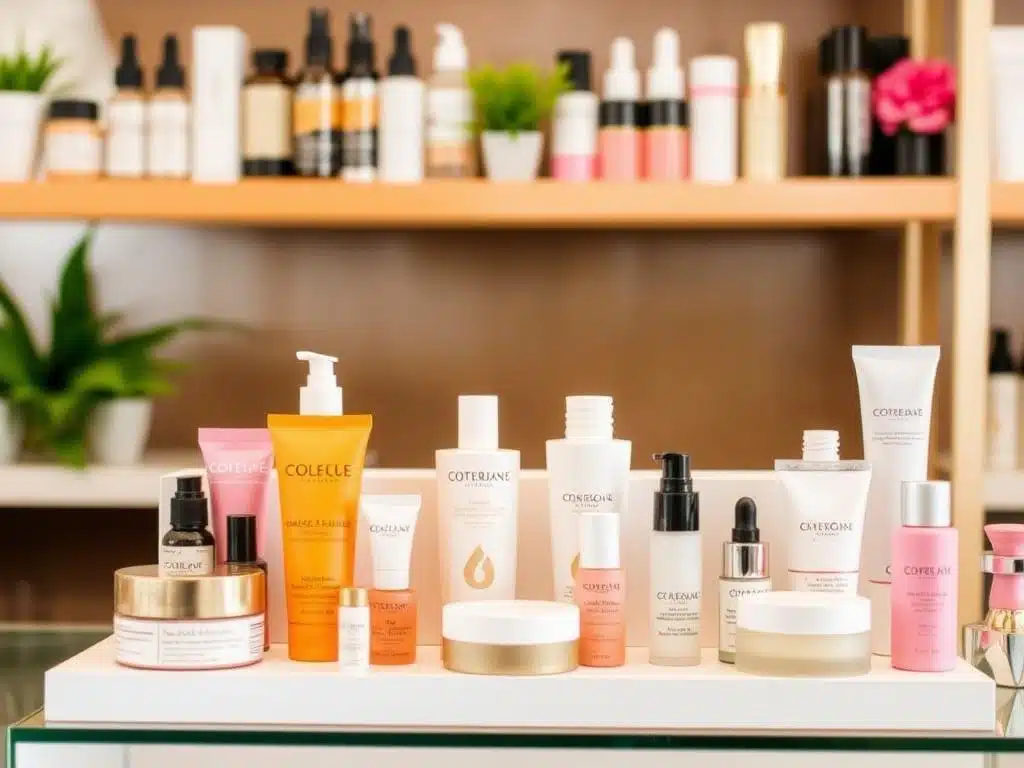
How Do I Sell My Beauty Products to Customers?
So you’ve developed an amazing beauty product and you’re ready to share it with the world.
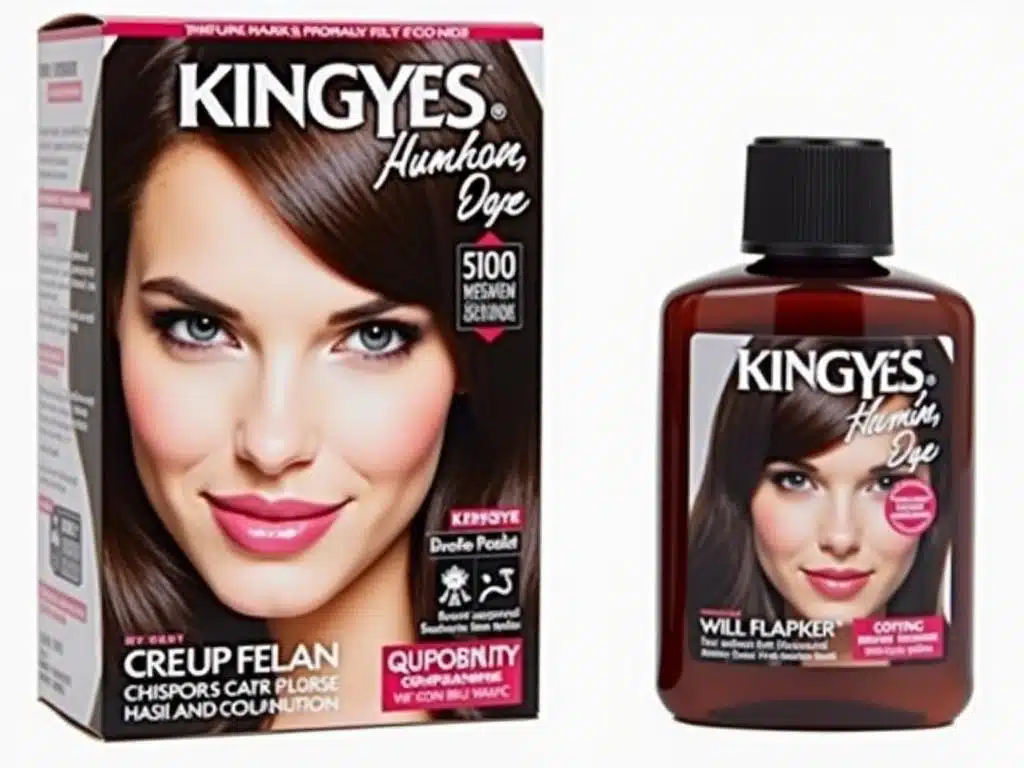
What Is The Healthiest Brand Of Hair Dye?
Want to dye your hair without compromising its health? Are you looking for the best natural hair dye that delivers vibrant color without harsh chemicals?
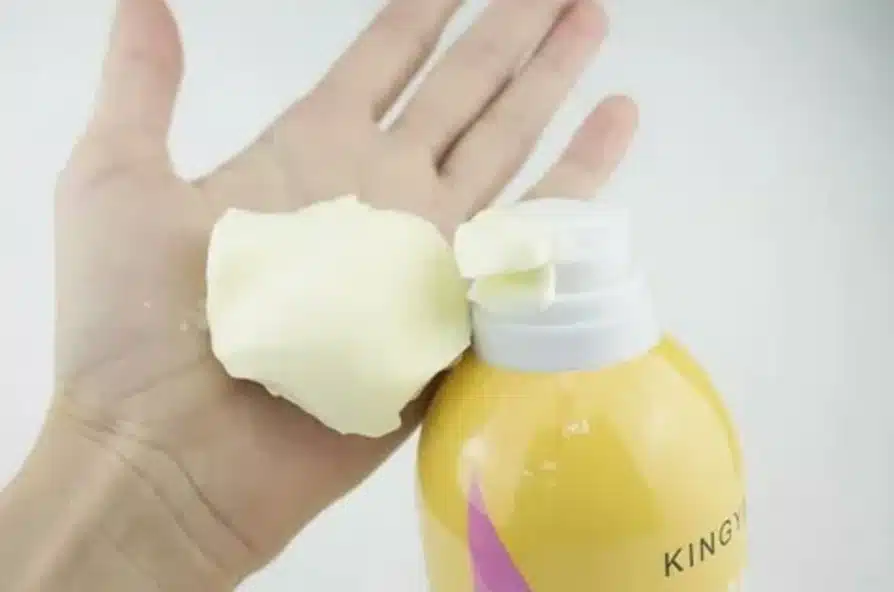
Na čo sa používa pena do kúpeľa?
Premýšľali ste niekedy, na čo sa používa pena do kúpeľa a ako môže zlepšiť vašu sprchovaciu rutinu?

Je dobré používať olej na vlasy každý deň?
Rozmýšľali ste niekedy nad tým, či je používanie oleja na vlasy skutočne prospešné?

Je odstraňovanie chĺpkov sprejom lepšie ako holenie?
Ste unavení z neustáleho kolobehu holenia a hľadáte lepšiu alternatívu?
- +86 151 1839 7303
- [email protected]
- Po-Ne 07:00-23:00
Značky
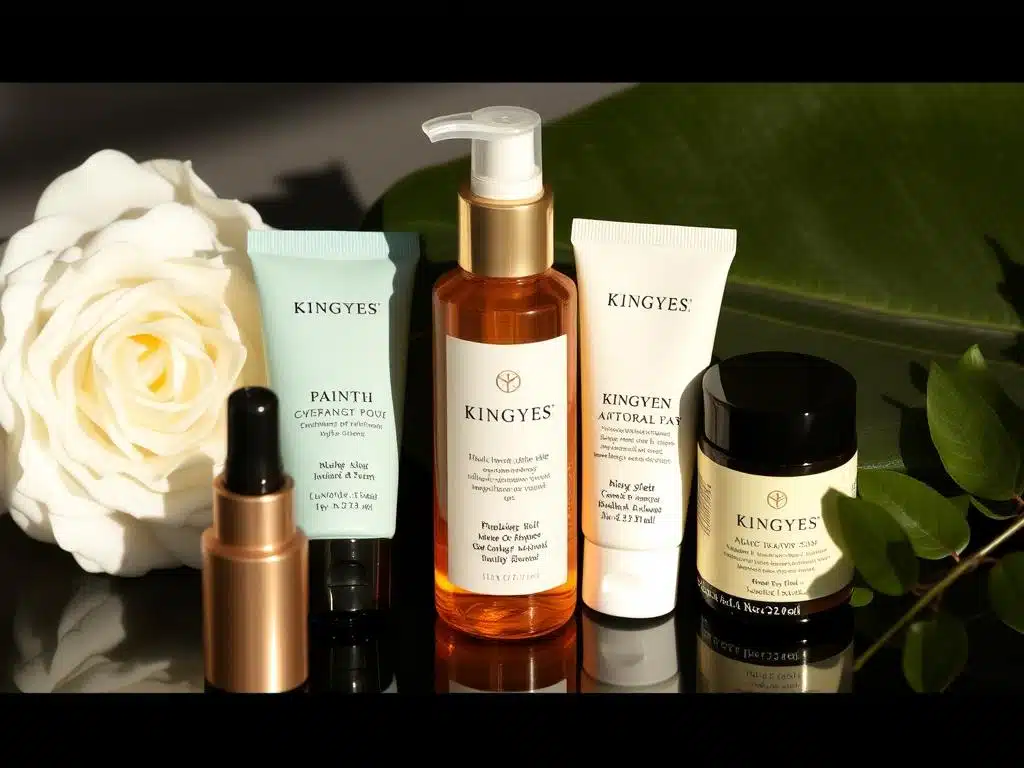
How To Sell Cosmetics On WeChat?
Are you ready to tap into the world’s largest beauty market?
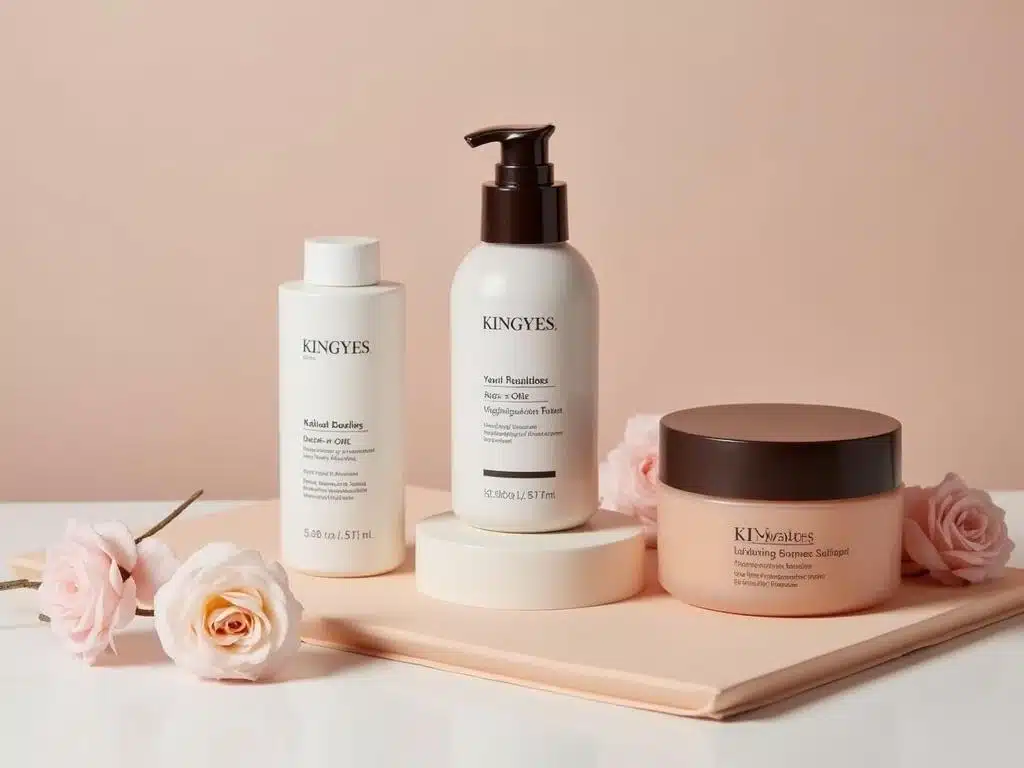
How To Sell Cosmetics On Shopee?
Looking to sell cosmetics and tap into the booming e-commerce market of Southeast Asia?
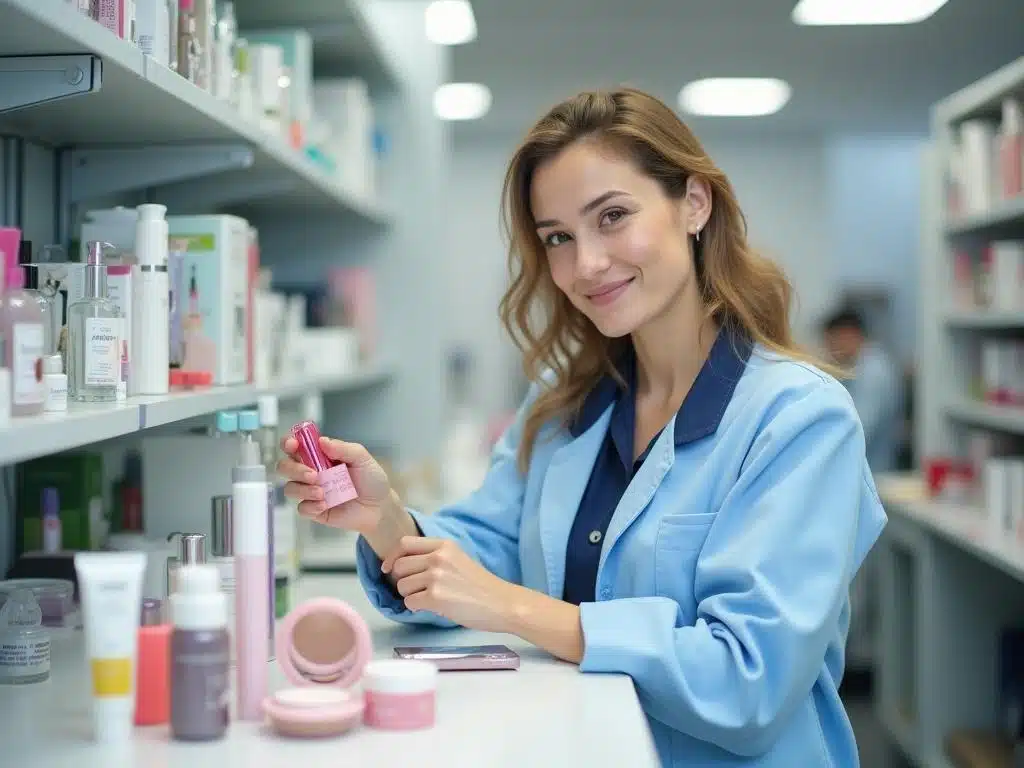
How To Cooperate With Cosmetics Factories?
In the dynamic and competitive beauty industry, partnering with the right cosmetic manufacturer is paramount to the success of your cosmetics business.

